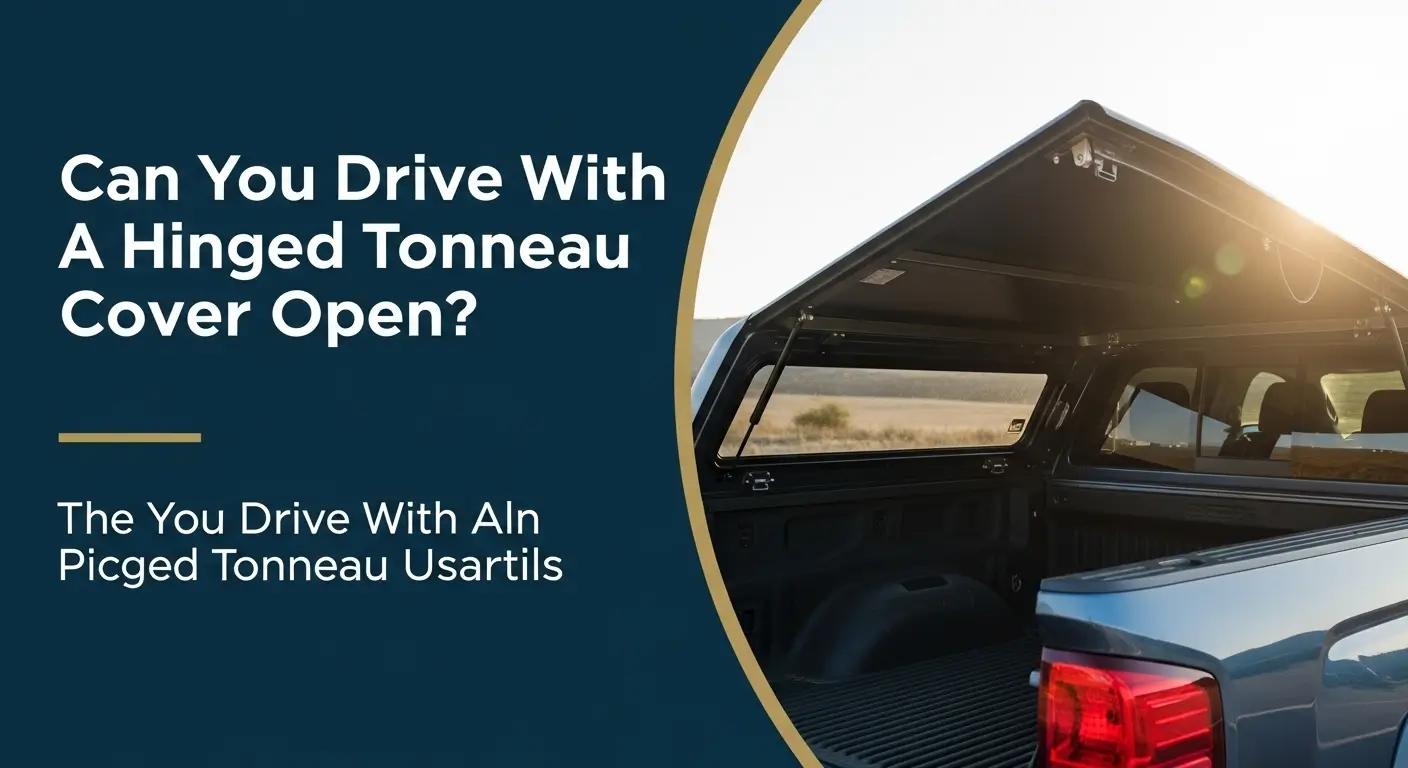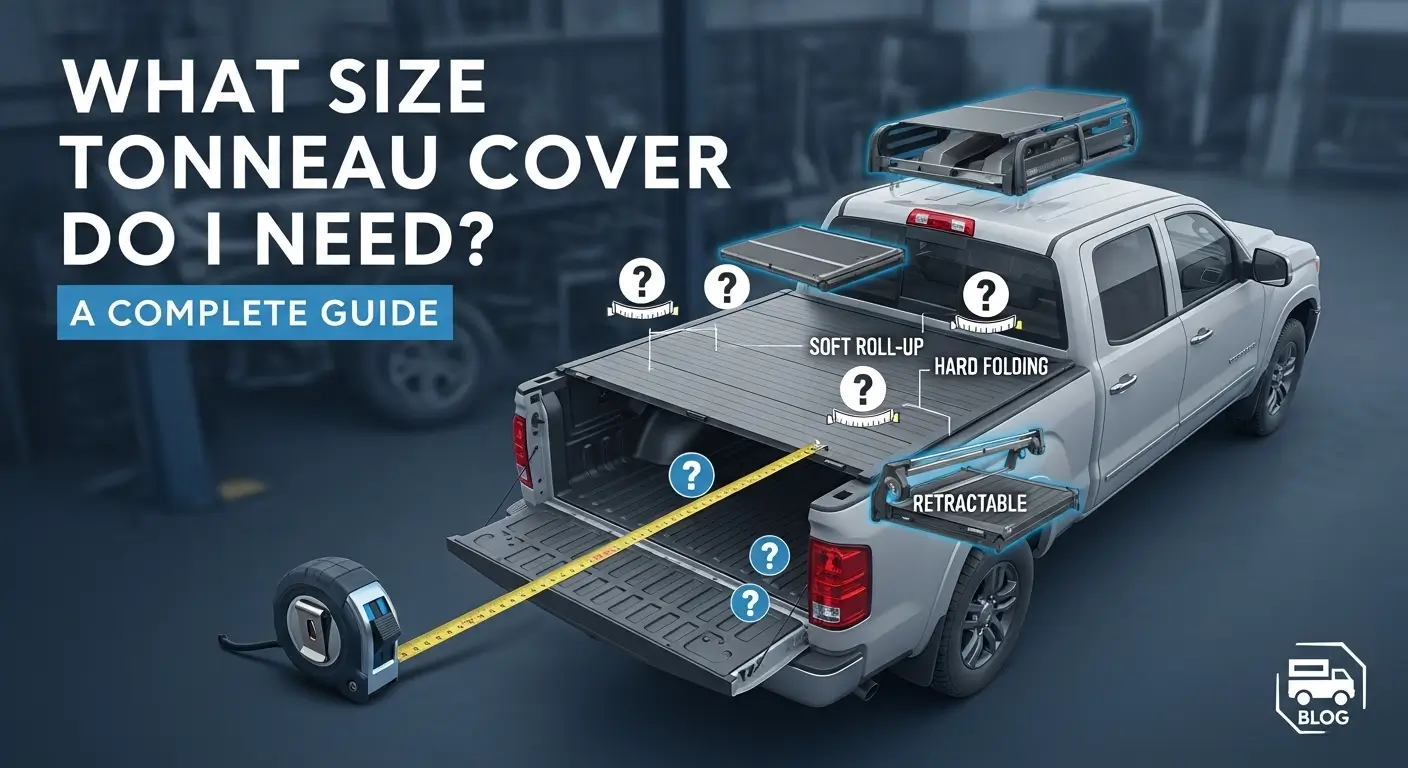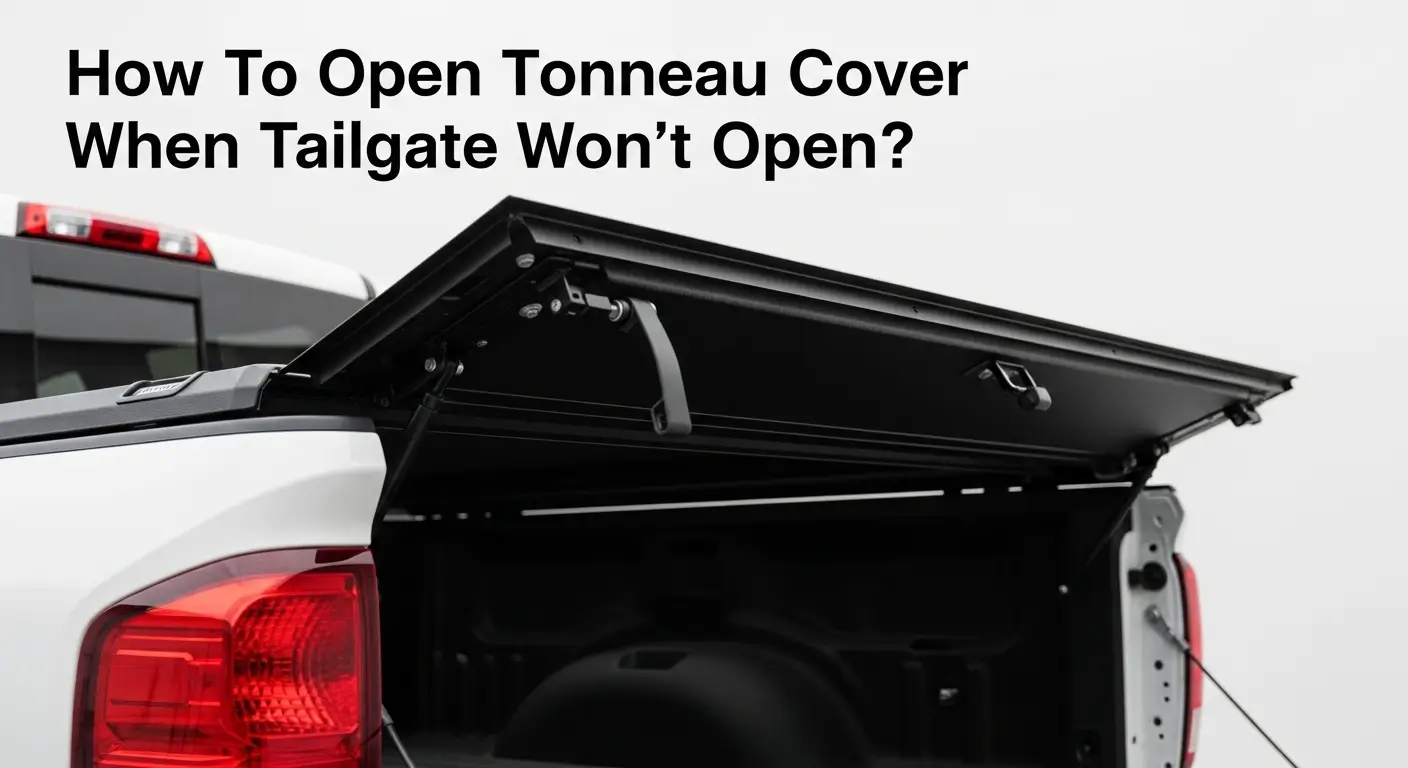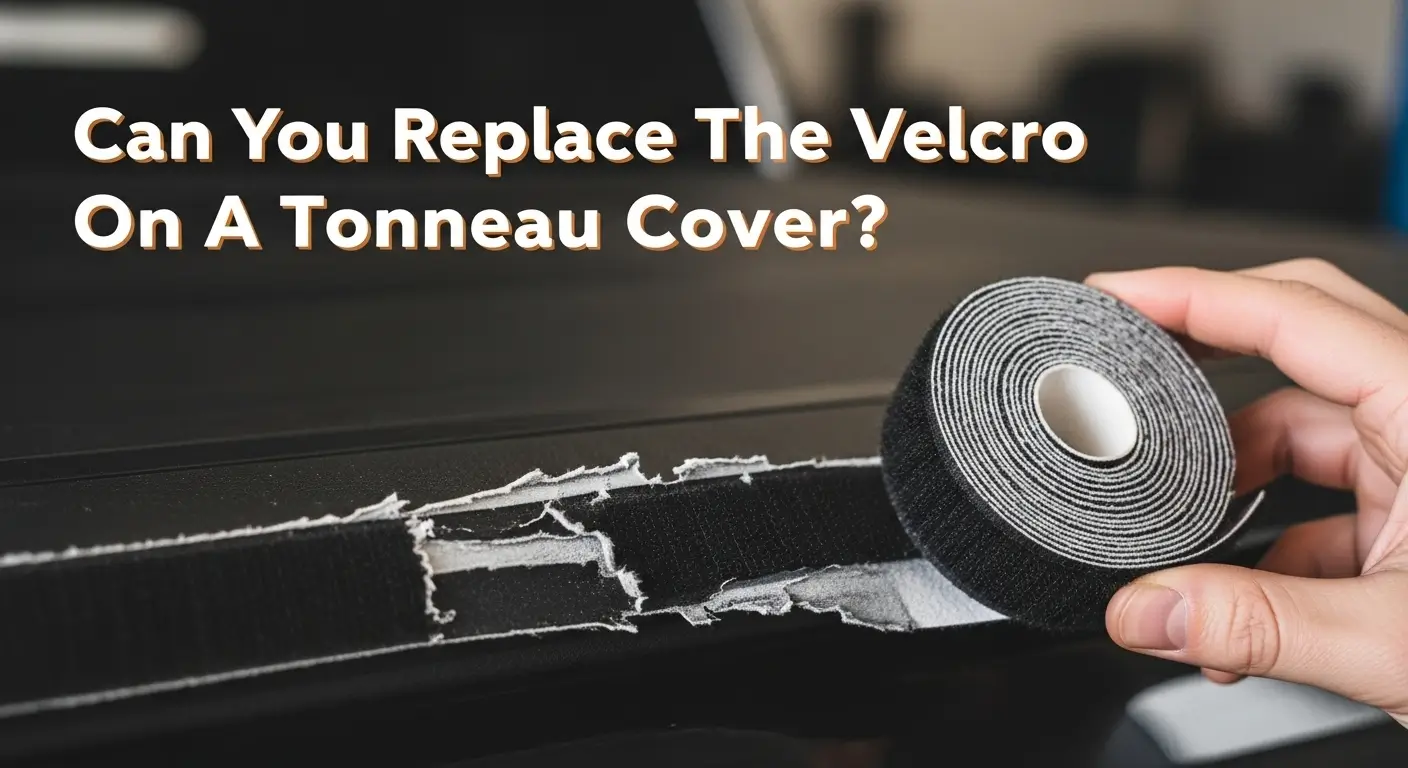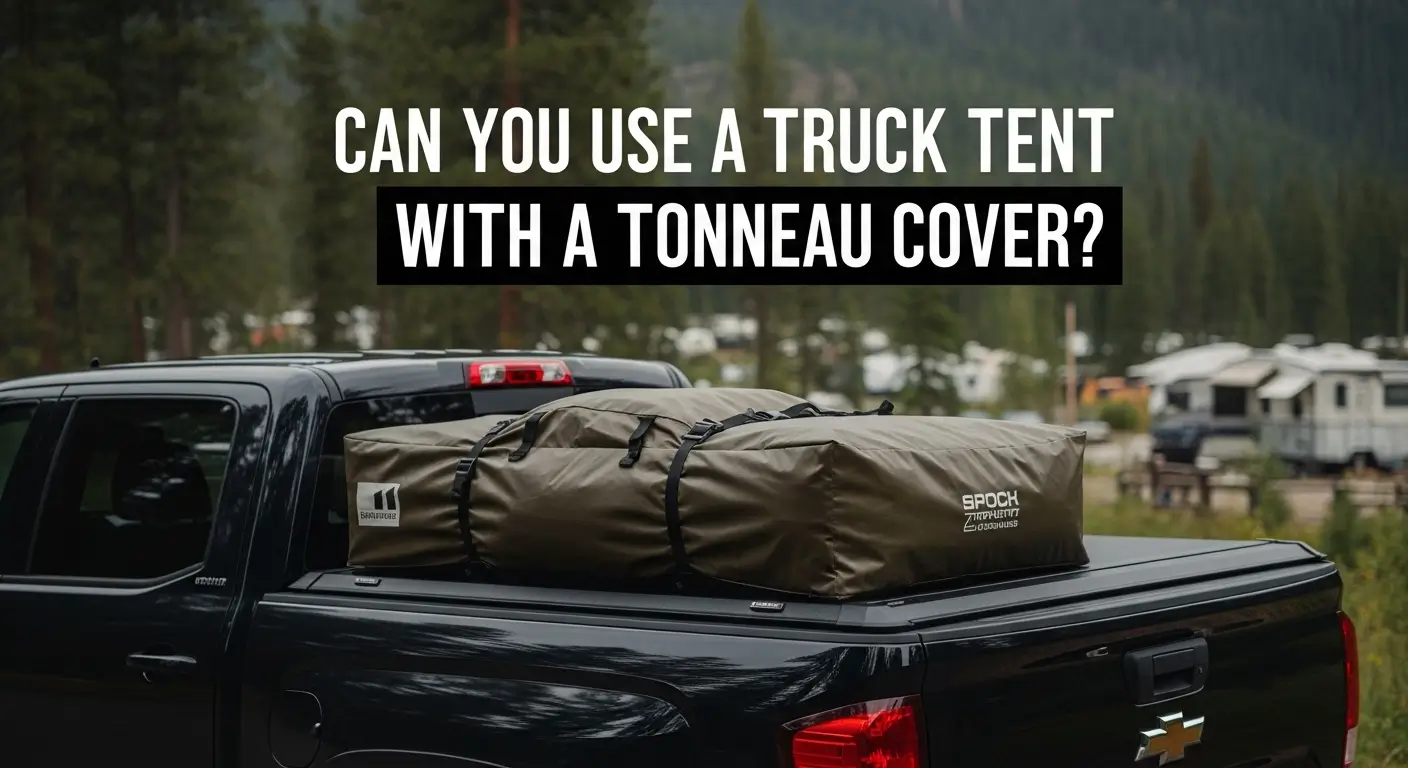A tonneau cover is a smart investment for any pickup truck owner, but one common question is: can you lock it? The answer is a resounding yes – most modern tonneau covers can be secured to protect your cargo.
This comprehensive guide will explore how tonneau covers enhance security, the different cover types and locking mechanisms, tips for choosing the right cover, and practical advice for keeping your truck bed locked down and safe.
By the end of this article, you’ll know exactly how to lock your tonneau cover and why it matters.
Table of Contents
Why You Should Lock Your Tonneau Cover

Leaving tools, gear, or valuables in an open truck bed is an invitation to thieves. A locked tonneau cover adds a crucial layer of security.
Locking your cover prevents easy access to the bed, deterring opportunistic theft and protecting your investment. Here are key reasons to secure your cover:
Theft Prevention
A visible lock or latch sends a clear “keep out” message. Even soft covers with locked tailgates make thieves pause. In many cases, truck bed thefts are crimes of opportunity; a locked cover often drives a thief to another target.
Weather Protection
A locked cover seals the bed tightly. This keeps rain, snow, and dust out of your cargo. It also prevents items from blowing away or shifting while driving.
Safety and Liability
An unlocked bed can spill debris on the road, risking accidents and fines. A properly locked tonneau cover keeps everything contained.
Resale Value
Trucks with secure, well-maintained tonneau covers often have better resale value. Buyers value the added protection and care.
In short, locking your tonneau cover safeguards your belongings and peace of mind. Without a lock (or by neglecting to use it), you leave your gear exposed and risk costly losses or damage.
How Tonneau Covers Enhance Truck Security
Even without an added lock, a tonneau cover itself is more secure than an open bed. It hides your valuables from prying eyes and provides a physical barrier. Adding a lock amplifies these benefits:
- Out of Sight: Thieves are less likely to bother when they can’t see what’s inside. A cover conceals tools, equipment, and luggage.
- Physical Barrier: A sturdy cover – especially a hard one – means thieves must cut, pry, or break locks to reach inside, which is time-consuming and noisy.
- Integration with Tailgate: Many covers lock in tandem with the truck’s tailgate. If your tailgate locks, the cover stays firmly in place. This means locking the tailgate essentially locks the cover.
Together, these factors make your truck a less appealing target. However, not all covers and locks offer the same level of protection. The next sections break down the types of covers and how each handles locking.
Types of Tonneau Covers and Their Locking Features
Tonneau covers come in various styles, each with different security characteristics. Here’s how each type generally handles locking:
Hard One-Piece (Hinged) Covers
These are solid, custom-fit panels (often fiberglass or hard plastic) that hinge at the cab and cover the full bed. They are typically the most secure cover style.
Locking: Most one-piece covers include a built-in lock or use the truck’s tailgate lock. When closed, they overlap the tailgate, preventing it from opening until the cover is unlocked. Many high-end models come painted to match your truck and include
proprietary keyed locks. For example, the UnderCover SE and LUX series have unique key sets, and Ranch SportWrap covers use a special locking mechanism plus remote entry. Because of their solid build and integrated locks, one-piece covers often top security rankings.
Hard Folding Covers
These covers consist of multiple rigid panels (usually aluminum) that fold up accordion-style. Examples include the BAKFlip G2 and Extang Solid Fold series.
Locking: Hard folding covers generally lock via the tailgate. When the tailgate is locked, the cover panels cannot be lifted. Some models have a cam latch or rope that also secures the cover. For instance, many BAKFlip covers use a pull-cord latch accessible only with an open tailgate.
The Extang Solid Fold has a latch that secures the panels together. While strong, these covers have seams, so their security depends on how well the latches hold and whether the tailgate is locked. They are very durable and can even support weight on top (often 300-400 lbs), adding to their utility.
Hard Rolling and Retractable Covers
These covers retract or roll into a canister (at the cab end) rather than folding. Popular models include the Bak Revolver X4 and Retractable covers like Retrax and GatorTrax.
Locking: Retractable and roll-up covers often rely on multiple mechanisms:
Tailgate Integration: Similar to folding covers, many roll-ups latch into the closed tailgate. Locking the tailgate keeps the cover closed.
Integrated Locks: Some retractable covers have built-in locks. For example, certain GatorTrax and Roll-N-Lock models feature keyed locks or even remote-controlled latches. The Car & Driver test found that the GatorTrax Manual is “lockable in any position, with a key,” meaning you can lock the cover at any point along the bed. However, not all models achieve this; some only latch down when fully closed.
Security Bars: A few high-end retractables include anti-lift bars or internal steel reinforcements to deter cutting.
Overall, hard rolling covers strike a balance between convenience (easy roll-up) and security. They’re sturdier than soft covers but sometimes less locked than one-piece tops.
Soft Roll-Up Covers
Soft roll-up covers (typically made of vinyl) are popular for their low cost and ease of use. Brands like TruXedo, Tyger, and MOSTPLUS make them.
Locking: Soft covers do not have built-in locks. Instead, their security relies on the tailgate. They attach with snaps or hooks and then roll up and latch under the rail. Latches usually only disengage when the tailgate is open.
For example, the TruXedo TruXport locks to the rail and uses a tailgate-dependent latch – you can only unlatch it when the tailgate is unlocked.
This means the tailgate must be locked to keep the cover secure. In some cases, you can add a padlock or aftermarket lock to the latch for extra security. Keep in mind: even with a locked tailgate, soft material can be cut with enough effort, so soft covers are the least theft-proof option.
Soft Tri-Fold Covers
These soft covers fold in sections (usually three) and lie flat on the bed. Extang’s Trifecta and ORCA tri-folds are examples.
Locking: Soft tri-folds use metal frames and twist latches. Like roll-ups, they rely on a locked tailgate or the twist latches (which only turn when the tailgate is open).
For instance, the Extang Trifecta ALX has twist knobs accessible only from inside the bed, making it secure against casual attempts. Again, material is still vinyl, so the tailgate lock is the main security.
Snap-On (Clip-On) Covers
The simplest covers, these use plastic or metal snaps to attach a soft cover to the rails. They’re very low-cost and lightweight.
Locking: Snap covers have no locks whatsoever. Their only security is the cover itself concealing items; the snaps can be undone easily without tools.
If you have one of these, the best you can do is lock your tailgate or replace the cover. They provide minimal theft protection.
How Tonneau Cover Locks Work
Locking a tonneau cover can mean different things depending on the design. Here are common lock mechanisms:
Tailgate Locks
By far, the easiest method is your truck’s existing tailgate lock. Most hard covers clamp onto or overlap the tailgate. When the tailgate is locked, the cover stays fixed.
This is effectively using your truck’s lock to secure the cover. Some trucks (especially newer models) have built-in tailgate locks; others may need an aftermarket kit. “Pop & Lock” tailgate locks are popular add-ons for trucks without a factory lock.
Built-In Keyed Locks
Many premium covers include a key cylinder. This could be a latch on top of the cover or built into a rear hinge. Turning the key in this lock allows you to unlatch the cover from the bed.
For example, one-piece covers often have a lock above the tailgate. Retractable covers may have a small keyed knob. These locks are specific to the cover and use unique keys (often in sets of two or more).
Twist and Lever Latches
These aren’t “locks” with keys, but they secure the cover to the rails. For instance, a tri-fold cover might have levers that twist down over bars. They keep the cover shut but still depend on a locked tailgate to prevent unauthorized opening.
Electronic/Remote Locks
The most advanced covers may offer electronic locking. Some retractable covers (like certain Roll-N-Lock models) come with a key fob to retract or lock the cover electrically.
The Retrax PowertraxPRO, for instance, has a motorized retraction system controlled by a remote.
While not a “lock” in the traditional sense, these systems often have safety interlocks that prevent opening without the remote. Bluetooth-enabled covers allow smartphone control and can send alerts if tampered with.
Padlocks and Aftermarket Locks
You can add external locks for extra security. For example, you might use a heavy-duty hitch lock or padlock on a latch if it has a hole. Some owners drill small hasps for padlocks on the frame. This is more common on soft covers (e.g., adding a small padlock to a hook latch). It’s less elegant, but a padlock can deter quick grabs on cheap covers.
Regardless of mechanism, the goal is the same: make it hard for anyone to lift or open the cover without authorization. In practice, that means using the strongest lock available, keeping it engaged, and checking it regularly.
Tips for Choosing the Right Lockable Tonneau Cover
With so many options, how do you pick a cover that locks well and fits your needs? Consider these factors:
Primary Need (Security vs. Convenience)
If theft prevention is your main goal, lean toward hard covers with proven locks. One-piece painted covers (like UnderCover SE/LUX) and certain factory-matched fiberglass lids top the list.
If you want ease of access but still need locks, consider a mid-priced retractable or hard roll-up (e.g., Bak Revolver X4s). If you prioritize budget and light cargo, a soft roll-up with tailgate lock is a compromise.
Material and Durability
Aluminum and fiberglass covers are much stronger than vinyl. Metal panels resist cuts and provide rigid locking points. Soft covers are lighter but can be punctured. A solid aluminum or composite cover usually includes more robust lock hardware than fabric.
Lock Type Preference
Do you want a key or a remote? Covers with integrated keyed locks (like many one-piece or upscale retractables) offer a tangible lock you can turn.
Remote-controlled covers add convenience, but require battery checks. Some users prefer the simplicity of a mechanical latch they can padlock themselves. Decide if you’re comfortable with electronics or want tried-and-true metal parts.
Compatibility
Always ensure the cover is designed for your truck model and bed (short bed vs. long bed, OEM rail vs. aftermarket rails). Some covers, especially one-piece, are custom-fit.
Others (like many roll-ups) fit via side rails. A poorly fitting cover can be insecure (gaps, water leaks) and its locking feature might not seat properly.
Budget
Secure covers range from a few hundred to over a thousand dollars. You’ll pay more for better materials and advanced locks. However, remember the cost of stolen tools or equipment can far exceed the cover price.
Often, truck owners who skimp on covers end up replacing many stolen items. It’s usually worth investing in a reputable brand with a warranty.
Top Brands to Consider
Some well-known locking tonneau covers include UnderCover (SE/LUX/One-Piece), Ranch (SportWrap), Bak (Flip G2, Revolver X4s), Extang (Solid Fold, Trifecta ALX), Retrax (PowertraxPRO, EQ), GatorTrax (Manual/Retractable), and TruXedo (TruXport with Sentry lock).
Each has models at different price points. Read product reviews focusing on the cover’s latch reliability and ease of locking.
Ease of Installation
A cover that’s hard to install or maintain might not get used properly. Some tailgate-integrated locks require drilling or expert installation.
A simpler roll-up clamps on and might be preferable if you need a DIY solution. Just know that DIY covers often rely solely on tailgate locks, so double-check those.
By balancing these considerations, you can choose a tonneau cover that not only locks but suits how you use your truck. Security should match your lifestyle: contractors and campers may opt for rugged lockable covers, while weekend users might prioritize convenience with moderate locking.
Common Questions and Counterpoints
Q: Can’t thieves just cut through a tonneau cover?
A: Technically yes, especially with soft covers or thin materials. But doing so takes time and effort. Most thefts are crimes of opportunity; the moment a thief hears an alarm or struggles with a heavy cover, they’ll likely give up. For maximum security, choose a thick hard cover and keep it locked.
Q: Is a locked tonneau cover really necessary if I already have an alarm?
A: An alarm is great, but it only alerts you or neighbors when tampering happens. A lock physically blocks access. Ideally, use both. A cover with a lock provides immediate protection, and an alarm adds a second layer if someone tries to break in.
Q: Aren’t removable tool boxes just as good?
A: Tool boxes and bed covers serve different purposes. A toolbox secures tools but only occupies part of the bed. A tonneau covers the entire bed and also improves aerodynamics. Some people use both: store expensive items in a lockable toolbox and cover them with a locked tonneau. It’s the ultimate combo.
Q: Does a cover trap water or cause damage?
A: Modern tonneau covers are designed to shed water off the sides, not trap it. Regularly clearing debris and keeping seals clean prevents pooling. Any cover (locked or not) needs maintenance. The security benefits far outweigh these minor concerns.
Q: What if I frequently haul large items?
A: You can still lock your cover when needed and remove or fold it when hauling. Many covers are designed for easy removal or adjustment. It’s a trade-off: if you carry bulky loads all the time, you might choose a simpler lock setup and remove the cover, but on days you need security, reinstall it. Some truck owners have a soft snap-on cover as a compromise since it’s quick to put on or off.
Conclusion: Secure Your Truck Bed Today
In summary, locking your tonneau cover is a practical way to protect your belongings and your truck’s value.
Most covers on the market today offer some locking capability, whether through integrated keys, latches, or by using your truck’s own tailgate lock.
Hard covers generally provide the best security, but even soft covers deter casual thieves when combined with a locked tailgate.
Remember to always lock the cover and tailgate whenever you leave your truck unattended – even for a few minutes.
Choosing the right cover depends on your budget, typical cargo, and security needs.
Evaluate hard vs. soft, decide if you need a key or remote, and consider well-reviewed brands that emphasize lock strength. Don’t neglect maintenance: keep locks lubricated and seals tight.
By taking a few extra minutes to properly lock and maintain your tonneau cover, you’ll enjoy real peace of mind. Ready to upgrade your truck’s security?
Start by examining the locking features of different tonneau covers, pick one that fits your needs, and lock down your truck bed. Your tools and gear will thank you – and so will your wallet in the long run.

